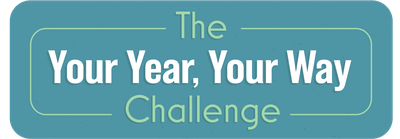There's a real satisfaction that comes with grabbing the heaviest grocery bag with ease or loosening that stubborn peanut butter lid without help. Yep, strength training "makes you feel badass," says Holly Rilinger, personal trainer, Nike master trainer and creator of creator of The LIFTED Program.
Rilinger designed this strength routine to help you really flex your muscles — but with a mindful twist. Unlike other fast-paced workouts that push you to do as much as you can, she wants you to take this one nice and slow.
Video of the Day
"The best way to build muscle is to pause — take a slight pause with each rep," she says. Focus on what you're doing and enjoy each movement, many of which may be familiar. That's intentional, Rilinger says, because these are exercises she often sees people doing incorrectly. Pausing and focusing can help you nail your form on every rep.
All you'll need is a few feet of space to get started; any other equipment is optional. "If you're brand new, then start with just your body weight. Let's get your movement patterns down," Rilinger says.
When you're ready for more of a challenge, you can do these moves with dumbbells, kettlebells or a barbell: Dumbbells are the easiest to use, she says. Kettlebells, which require a particular grip for each exercise, are trickier, and barbells are the most advanced, as they generally weigh more and demand a particular loading style.
Start With a Moment of Mindfulness
Mindfulness is an important part of Rilinger's fitness strategy; she compares it to the moments athletes spend sitting in the locker room clearing their heads before competing.
Before you begin this workout — or any of Rilinger's programs for the 'Your Year, Your Way' Challenge — follow along with this 2-minute meditation to help you stay present and get the most out of every movement.
How to Do This 28-Minute Strength Workout
For the 'Your Year, Your Way' Challenge, Rilinger designed a four-week progression so that your workouts get harder (and you get stronger) throughout the month.
Each week, try to add a small amount of weight to each exercise, she says. "As you go along, if something becomes easy, add more weight." If you're using your body weight or don't have access to weights, add 2 more reps each week.
The Warm-Up
Start this strength workout with 30 seconds each of the three warm-up moves below.
- Jogging in Place: Get your heart rate up by jogging in place. Shake out your hands to get the blood flowing.
- Plank: If you can't hold a plank for 30 seconds, break it up into 10- or 15-second segments. You can also lower to your knees, Rilinger says.
- Glute Bridge: This simple move activates your glutes for the rest of the session.
The Main Workout
Week | Reps | Rest in Seconds | Circuits |
|---|---|---|---|
Week 1 | 10 | 30 | 2 |
Week 2 | 12 | 30 | 2 |
Week 3 | 15 | 30 | 2 |
Week 4 | 12 | 30 | 3 |
- Squat: Lower your body until your knees form 90-degree angles, or squat as low as you can comfortably go with good form.
- Push-Up: "There's no shame in the modification game," Rilinger says. Take advantage of the many push-up variations: You can lower your knees to the ground or elevate your hands on a step, box or wall.
- Bent-Over Row (With Weights) or Plank Row (No Weights): Don't over-arch or round your back, Rilinger says.
- Forward Lunge: Keep your hands on your hips if you're doing this move without weights. If you have weights, you can hold one at chest level or two at your sides, shoulders or above your head.
- Hammer Curl to Press (With Weights) or Bear Crawl (No Weights): Engage your abs and glutes throughout.
- Triceps Extension (With Weights) or Crab Walk (No Weights): Stick to a single dumbbell if you're using a heavier pair.
- Sit-Up: Hold your weight close to your chest throughout or ditch it and cross your arms over your chest.
